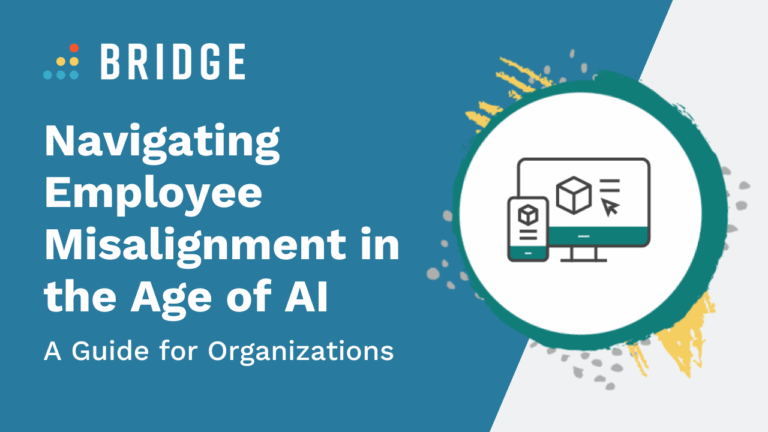Managers are a vital part of an organization’s success story and crucial to the performance and well-being of its talent pool. They’re the ones who recognize and nurture their team’s talents, work with them to achieve their goals, and deliver business results. According to Gallup, managers influence a team more than any other factor and can even account for a 70% variance in employee engagement!
Investing in the development of current and future managers gives them the skills and behaviors to boost engagement, drive growth, and build people-first teams.
What Is a People-First Team?
In a people-first team, the manager supports an employee’s performance and development through coaching and mentoring. Every employee has a clear vision and development plan and understands what’s expected of them at all times. They have the tools, equipment, and training opportunities to perform their best work and use their talents in daily activities.
There’s a lot riding on your managers, so you need to guarantee they’re the best they can be. That means investing in their development too.
FURTHER READING | ‘Putting People First: Why Creating an Employee-First Culture Matters’
How to Develop People-First Managers
Managers are the foundation of people-first teams. They’re the ones who work with their employees to define and achieve their career goals and support their ongoing development, so they also need training and development opportunities to enable employees to be their best.
LinkedIn’s 2022 Workplace Learning Report reinforces this view—research shows that managers are the most critical factor in a caring employee experience, and nearly half of L&D professionals have increased training and support to develop their skills.
Here’s how to develop people-first managers:
1) Focus on Transferable Skills
Findings show that employees want a manager who invests in their personal development and acts as a coach, but only one in three managers agree that they’ve had opportunities to learn and grow. Traditionally, most managers progress in their careers by showing a high level of performance in their roles, so they don’t have opportunities to develop and practice some of the skills and behaviors needed to be great leaders.
An effective training program should include plenty of opportunities for managers to develop behaviors like coaching, decision-making, and empathy, as these are the skills they’ll be using daily to engage with employees.
RELATED READING | ‘How to Launch a Training Program at Your Organization [The Ultimate Guide]’
2) Observe, Analyze, and Give Feedback
While online courses will give employees a basic understanding of soft skills like how to recognize and resolve conflict, the most valuable source of knowledge is your people. An effective way to develop their skills is through coaching managers to practice skills like communication and empathy in a safe environment and then offering actionable feedback. It doesn’t just have to be leaders who step into the role of coaches—look for other skilled employees who are happy to share their knowledge.
Coaches should follow a three-step cycle:
- Observe the manager in their role to check their mastery of a skill.
- Look at any data like engagement surveys or performance reviews to provide more insight.
- Offer actionable insight and feedback.
3) Encourage Communication to Build Connection
Good communication is essential for building connections. In addition to regular one-on-ones, managers should always have an open-door policy with their teams, keep employees in the loop with relevant company information, and offer timely feedback. Managers and employees can also strengthen their connection by playing Bridge Drivers—a card game that provides the framework for career conversations. The exercise helps managers to understand what drives employees, how they like to communicate, and how to build an engaging and productive environment.
Through practicing and perfecting these conversations and talking regularly, managers understand how engaged their people are, whether they have everything they need to perform at their best, and how to identify their development needs.
CHECK OUT THE INFOGRAPHIC | ‘Building Organizational Resilience: 5 Skills Every People-First Manager Needs’
How Do Managers Identify and Assess Skills?
Managers know their teams well and are often the first to recognize where skills gaps lie. They can recognize where an employee’s talents lie, give them the tools they need to reach their full potential, and offer support when needed.
Here are five ways managers can help assess employees’ skills:
1) Be Proactive With Conversations
Good managers are always aware of the bigger picture. They know how the organization is doing, whether skills gaps are becoming apparent, and how their teams’ performance contributes to organizational success. This information is used proactively with employees and helps align their needs with business necessities. Timely communication of this information through regular one-on-ones and performance conversations is an effective way to make sure they’re giving employees the coaching and mentoring they need to achieve their goals.
Managers should always be ready to reach out. If they feel that an employee isn’t performing at their best, it’s a chance to try and understand why. Sometimes, all it takes is a simple conversation to find out what an employee is having trouble with and where they need extra guidance. They can work together to fill this knowledge or close skills gap through training and guidance.
2) Look at the Metrics Regularly
Tracking progress toward goals, skills feedback, or post-training assessment scores shows how employees perform and whether any skills gaps exist. Without this evidence, it can be hard to know where skills gaps lie. It’s not enough to wait until a quarterly or annual review—managers should look at this information regularly, use it to inform their one-on-ones, and, if necessary, update performance goals. The data will also help employees to take ownership of their goals and understand how their work contributes to larger business objectives.
HANDPICKED FOR YOU | ‘One-on-One Meetings: How the Personal Touch Improves Workplace Performance’
3) Practice 360-Degree Feedback
Managers are a great source of insight because they know their teams well, but they aren’t the only ones who can weigh in on an employee’s performance. Managers should tap into the experience of peers who work closely with their team members to build a more rounded picture of their performance. 360-degree feedback can reveal what skills employees are performing well at and what’s currently missing by asking managers and coworkers to rate skills and behaviors. Poor performance scores in a department or particular skill could highlight where to focus training and development efforts.
4) Play to People’s Strengths
Every employee performs tasks that make them feel energized and tasks that drain them of their energy. Most of the time, the activities that give them energy are the ones they’re good at. If employees are encouraged to develop in the areas that drain them, they’ll likely become disengaged or perform poorly, and you’ll lose the great work they were doing by trying to get them to be good at something that leaves them feeling deflated.
Managers recognize where their people shine. They should work with their employees to find what drives them and translate it into the skills they can use in their day-to-day work—that’s where they should spend most of their time. From here, they can build training programs to align their skills with the wider team and company goals and bridge skills gaps through learning and development opportunities.
YOU MIGHT ALSO LIKE | ‘Why Performance Reviews Shouldn’t Be a Once-a-Year Deal’
The Importance of Skills Assessments
Just as every employee has their strengths, they have weaknesses too. Individually, it might seem like an issue, but looking at a team, department, or even organization as a whole will give you a well-rounded view of skills. It’s helpful to focus on the bigger picture because you can check if teams have the necessary competencies and if employees are balancing each other out.
Conducting regular skills assessments helps to understand the skills your people have, their current performance, and any development activities they’re undertaking towards closing skills gaps. When these skills align with performance goals, it’s easy to see how effectively employees can put what they’ve learned into practice. Managers need to understand where their teams’ strengths lie and ensure they have opportunities to develop the most relevant skills to their goals and motivations.
Explore More Ways to Build a People-First Team
To find out more about the importance of ongoing learning and development, how to drive engagement, and the five skills all managers need to connect with people:
BE SURE TO CHECK OUT: Our Webinar with Ryan Houmand, (Learning Engagement Specialist):
“5 Critical Skills Managers Need to Lead Growth-Minded Teams” on Tuesday, September 6th at 2pm EDT
Bridge’s Performance Management platform helps you connect your people, drive better business outcomes through training, and close skills gaps.




